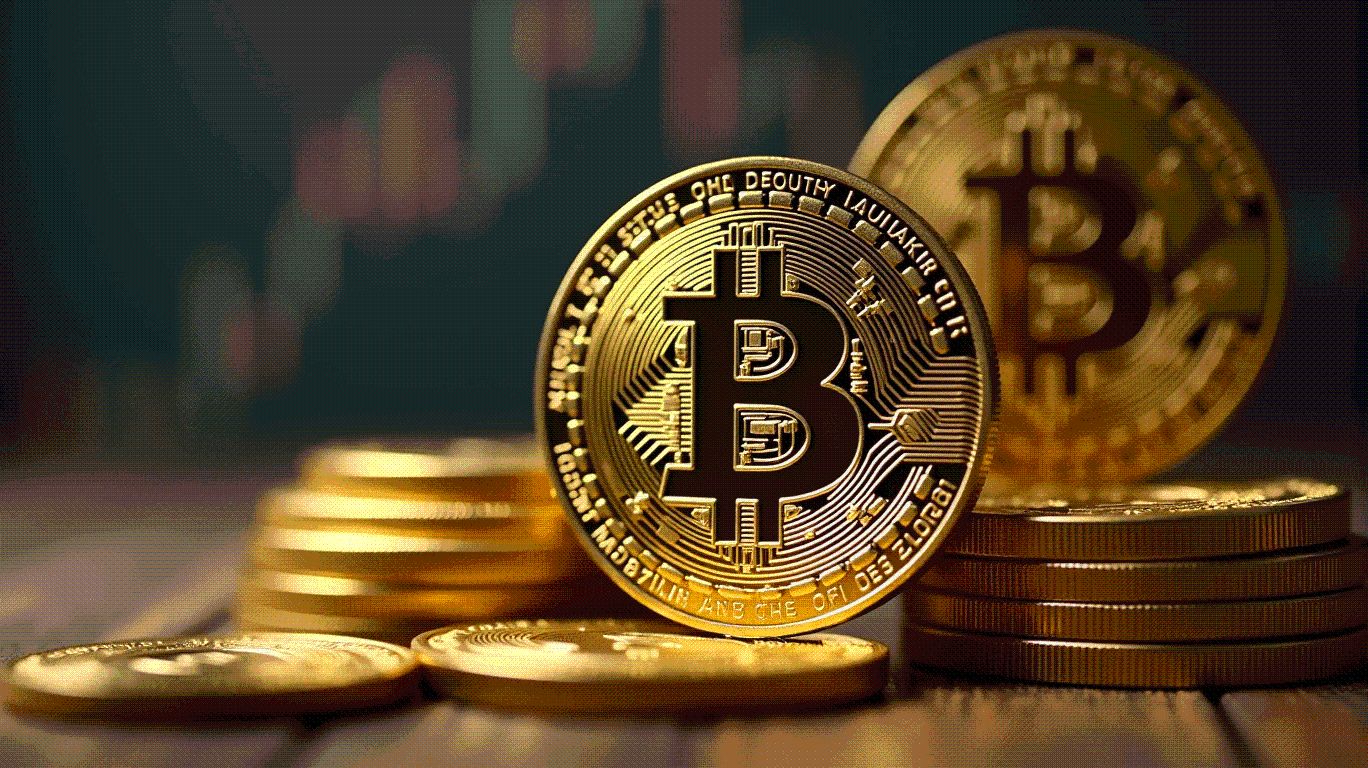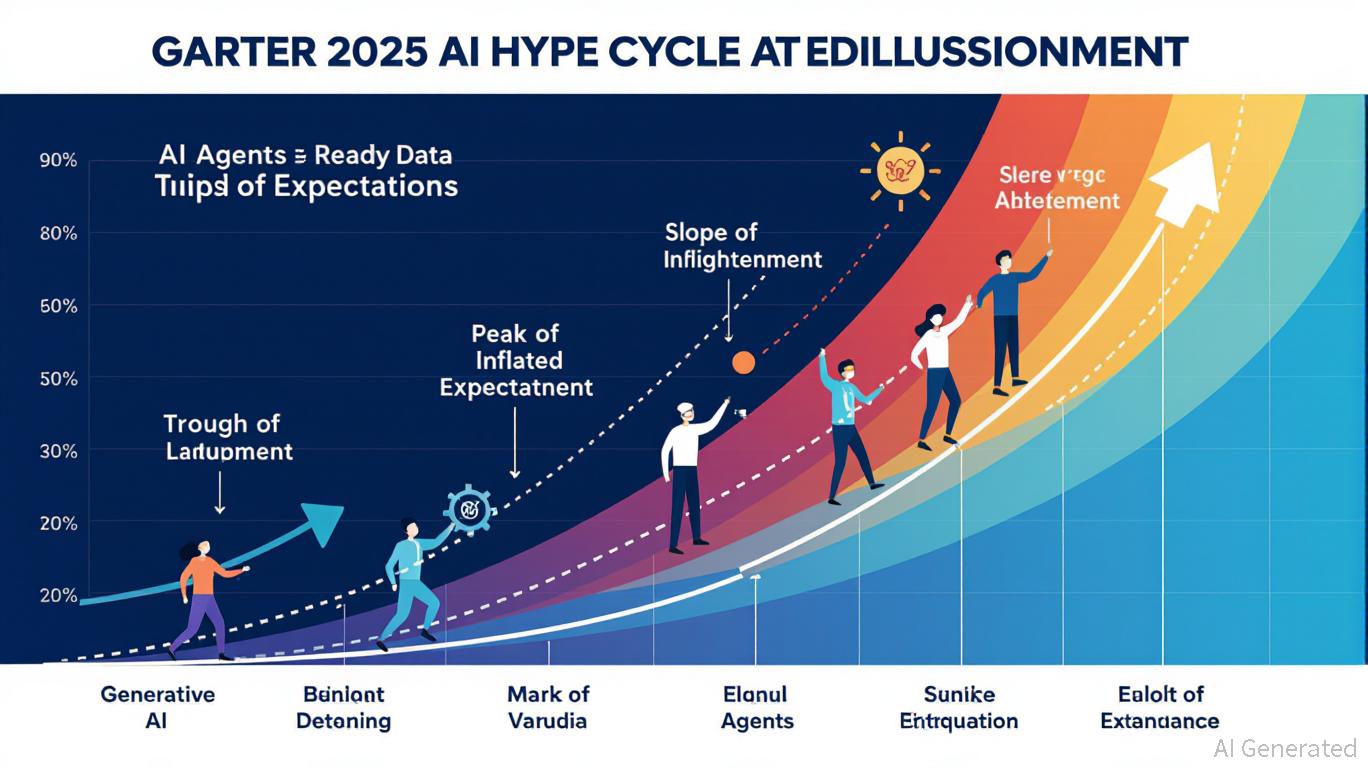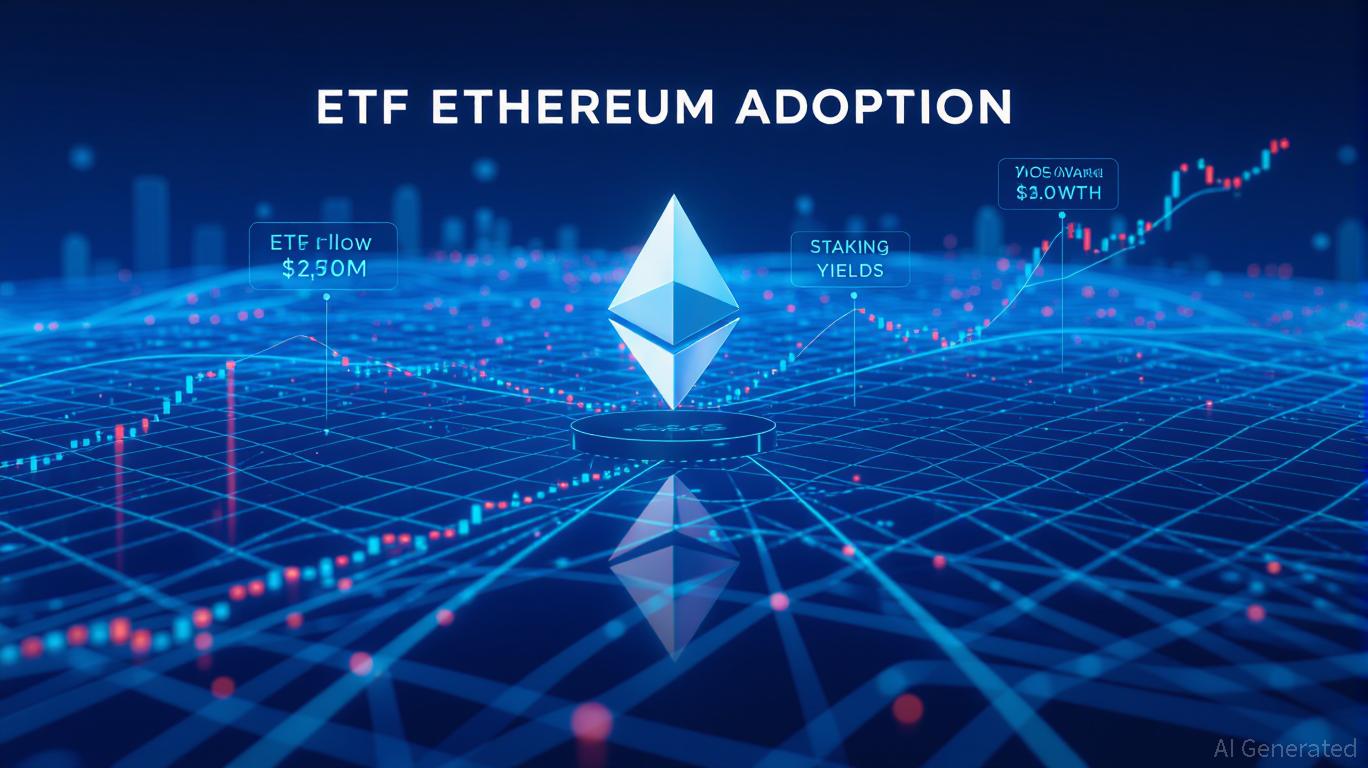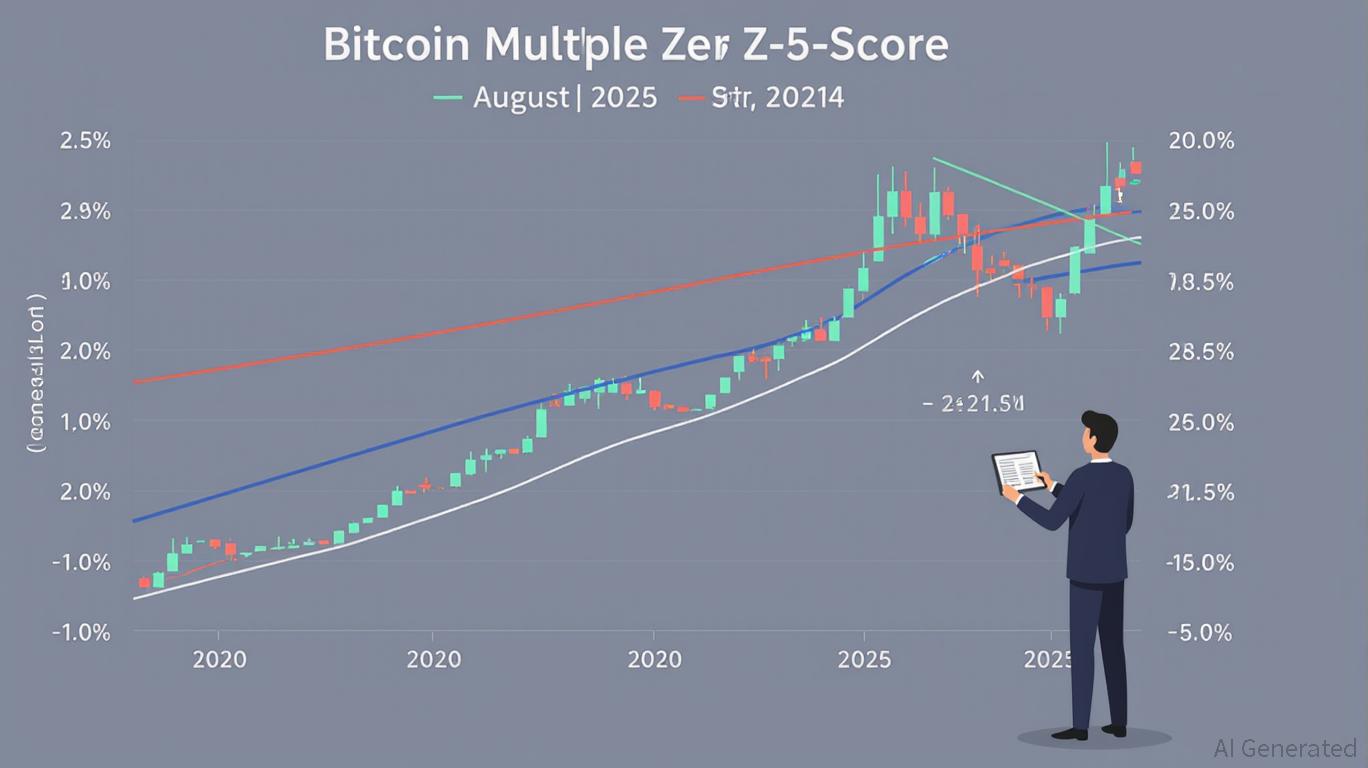News
Stay up to date on the latest crypto trends with our expert, in-depth coverage.

- The Fed faces a 2025 dilemma: 2.7% inflation persists while unemployment stays near 4.2% historic lows. - Structural shifts show healthcare job growth (73,000 July jobs) and rising long-term unemployment (1.8M) threatening labor flexibility. - Investors must balance exposure to inflation-protected assets and growth sectors amid fragile labor markets and uncertain policy paths. - Shrinking labor participation (62.2%) forces consideration of wage-driven inflation risks and potential liquidity traps. - Stra

- AI sector faces legal battles over data copyright, with Meta and Anthropic facing lawsuits defining fair use and pirated content risks. - Antitrust actions intensify globally, targeting Google, Meta, and Big Tech monopolies through fines, breakups, and structural reforms. - Talent wars drive $100M+ retention costs, with Anthropic and Google competing for AI experts through salaries, culture, and infrastructure. - Market consolidation risks clash with fragmented growth, as EU AI Act and U.S. state laws cr

- Gartner's 2025 Hype Cycle shows generative AI in the Trough of Disillusionment, while AI agents/data face inflated expectations and valuation risks. - Alibaba's 26% cloud-intelligence revenue growth contrasts with 8.8% EBITA margins, highlighting AI infrastructure costs and RISC-V chip strategy shifts. - NVIDIA's 57.7x P/E ratio and geopolitical risks from China's AI chip push raise concerns as Blackwell-driven revenue hits $46.7B. - Zhihu's 62.5% gross margin and cost optimization demonstrate trough-pha

- LPT surged 113.75% in 24 hours to $6.787, its largest daily gain amid sharp multi-period price swings. - The token rose 1864.86% weekly and 1287.16% monthly, contrasting a 5324.81% annual decline that highlights its volatility. - Analysts attribute the rebound to speculative trading, protocol updates, or platform adoption, but question the sustainability of the uptrend. - A backtesting hypothesis suggests systematic strategies could capture similar gains through trigger-based entry/exit frameworks.

- Ethereum surged 6.74% in 24 hours on Aug 30, 2025, reversing a 30.21% 7-day drop amid broader crypto market recovery. - ETH gained 1796.92% in one month and 3071.44% in one year, driven by macroeconomic trends and institutional blockchain interest. - A backtesting strategy evaluates short-term ETH surges, using 5%+ daily gains to trigger 3-day positions with 5% stop-loss and 10% take-profit targets.

- Ethereum's 2025 institutional adoption surge stems from technical upgrades (Fusaka/Dencun/Pectra) enabling 100k TPS at $0.08/tx, plus 3-14% staking yields outpacing traditional assets. - Institutional investors now control 9.2% of ETH supply via ETFs (77% August inflows) and corporate treasuries, with $17.6B staked across 19 firms. - Regulatory clarity (CLARITY/GENIUS Acts) and $20-30B daily stablecoin settlements solidify Ethereum as Wall Street's "productivity engine" and DeFi backbone. - Analysts proj

- Bitcoin’s Mayer Multiple Z-Score of -0.3 in August 2025 signals undervaluation relative to its 200-day moving average ($100,465.20) at $113,508.55. - The metric (1.13) reflects a mature market with reduced volatility compared to 2017/2021 cycles, indicating stable institutional adoption. - A negative Z-Score highlights a statistical edge for long-term investors, aligning with historical mean-reversion patterns in bull cycles. - Reduced speculative trading and increased derivatives liquidity strengthen th

- Solana validators are voting on the Alpenglow upgrade, a historic consensus overhaul aiming to reduce block finality from 12.8 seconds to 150 milliseconds via off-chain validation. - The upgrade introduces a "20+20" resilience model and removes fixed voting costs, promoting decentralization by eliminating stake-based penalties for validators. - If approved, Alpenglow could enhance Solana's competitiveness in high-performance sectors like DeFi and gaming while aligning with industry trends toward faster,

- CNPC explores stablecoins for oil trade, challenging dollar dominance and advancing yuan globalization. - Hong Kong's stablecoin regulations support CNPC's strategy, bridging China's capital controls with global markets. - Conflux 3.0 blockchain enables high-volume settlements, with market projections reaching $2 trillion by 2028. - Regulatory risks persist, with former PBOC Governor Zhou Xiaochuan warning of currency over-issuance and speculative misuse. - CIPS integration with stablecoins aims to creat

Despite a sluggish market, smart money has been buying into Shiba Inu, Uniswap, and Lido DAO. On-chain flows, whale behavior, and technical signals highlight why these tokens are being positioned for potential rebounds.
- 07:30SOL Strategies provides institutional-grade security standards support for Solana staking servicesJinse Finance reported that SOL Strategies (Nasdaq: STKE) is a company that integrates a Solana asset pool with a “revenue-generating” validator business. The company announced that it has successfully passed both SOC 2 Type 2 and SOC 1 Type 2 audits, with no non-compliance issues found. It is reported that this audit has verified SOL Strategies’ control measures, effective risk management capabilities, and its adherence to industry best practices in validator operations. This milestone builds upon the company’s previously obtained certifications and reports, including ISO 27001 Information Security Management System certification, SOC 2 Type 1 audit report, and SOC 1 Type 1 audit report. These achievements fully demonstrate SOL Strategies’ strong commitment to maintaining security standards for institutional clients’ Solana staking business. Among them, the SOC 2 Type 2 audit is a “long-term independent assessment” of SOL Strategies’ security control measures, which not only verifies the soundness of the company’s security practices design but also the effectiveness of their actual implementation.
- 07:30The dYdX forum has released a new proposal suggesting that 100% of protocol net fees be allocated to DYDX token buybacks.According to Jinse Finance, the dYdX Foundation stated that a new proposal has been posted on the dYdX forum, suggesting that 100% of the protocol's net fees be allocated to DYDX token buybacks for an experimental trial period of three months, from November 1, 2025 to January 31, 2026.
- 07:18Pi Network Ventures completes its first investment in OpenMind to jointly build a decentralized intelligent robot collaboration frameworkChainCatcher reported that Pi Network Ventures has announced the completion of a strategic investment in OpenMind and has officially launched a technical collaboration. OpenMind's core technologies include the hardware-agnostic OM1 operating system and the FABRIC protocol, which together enable robots to collectively learn and collaborate within a decentralized ecosystem. Leveraging Pi Network's distributed computing power and its global network of 350,000 nodes, OpenMind has successfully completed the first proof of concept (PoC) for deploying distributed AI models for robots. OpenMind is able to deploy AI models for facial recognition used by robots on the OM1 operating system in a decentralized manner, reducing the costs and dependencies associated with traditional centralized cloud computing, and strengthening multi-layered privacy protection in embodied intelligence scenarios through a verifiable and permissionless approach. Pi Network Ventures stated that investing in OpenMind is not only a capital deployment, but also an important step in building Pi Network's technological and ecosystem synergy capabilities in the era dominated by physical AI and embodied intelligence. Both parties will continue to collaborate in the direction of distributed computing power and agent collaboration, exploring the next stage of integration possibilities among blockchain, AI, and intelligent robots.